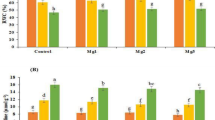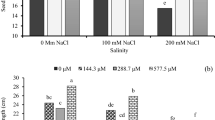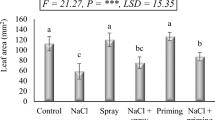Abstract
IT is considered that the ammonia produced by the hydrolysis of urea in the soil damages the roots of plants. Recently, Cooke1 reported that at least one other factor may be operative in urea toxicity. Weber and Tanford2 demonstrated that 2-chloroethanol strengthened the intramolecular hydrogen-bonding of ribonuclease and urea possessed the opposite character. The increase of resistance to high salt concentration by the seed treatment with dilute 2-chloroethanol solution was found by Miyamoto3. The present investigation deals with the antagonistic effect of urea and 2-chloroethanol on the resistance when their dilute solutions are applied to the wheat seed treatment.
This is a preview of subscription content, access via your institution
Access options
Subscribe to this journal
Receive 51 print issues and online access
$199.00 per year
only $3.90 per issue
Buy this article
- Purchase on Springer Link
- Instant access to full article PDF
Prices may be subject to local taxes which are calculated during checkout
Similar content being viewed by others
References
Cooke, I. J., Nature, 194, 1262 (1962).
Weber, R. E., and Tanford, C., J. Amer. Chem. Soc., 81, 3255 (1959).
Miyamoto, T., Physiol. Plant. (in the press).
Author information
Authors and Affiliations
Rights and permissions
About this article
Cite this article
MIYAMOTO, T. Antagonistic Effect of Urea and 2-Chloroethanol on the Resistance to High Salt Concentration in Wheat Seedlings. Nature 196, 491–492 (1962). https://doi.org/10.1038/196491b0
Issue Date:
DOI: https://doi.org/10.1038/196491b0
This article is cited by
-
Increase of the heat resistance by the seed treatment with 2-chloroethanol in the wheat seedlings
Die Naturwissenschaften (1963)
Comments
By submitting a comment you agree to abide by our Terms and Community Guidelines. If you find something abusive or that does not comply with our terms or guidelines please flag it as inappropriate.



